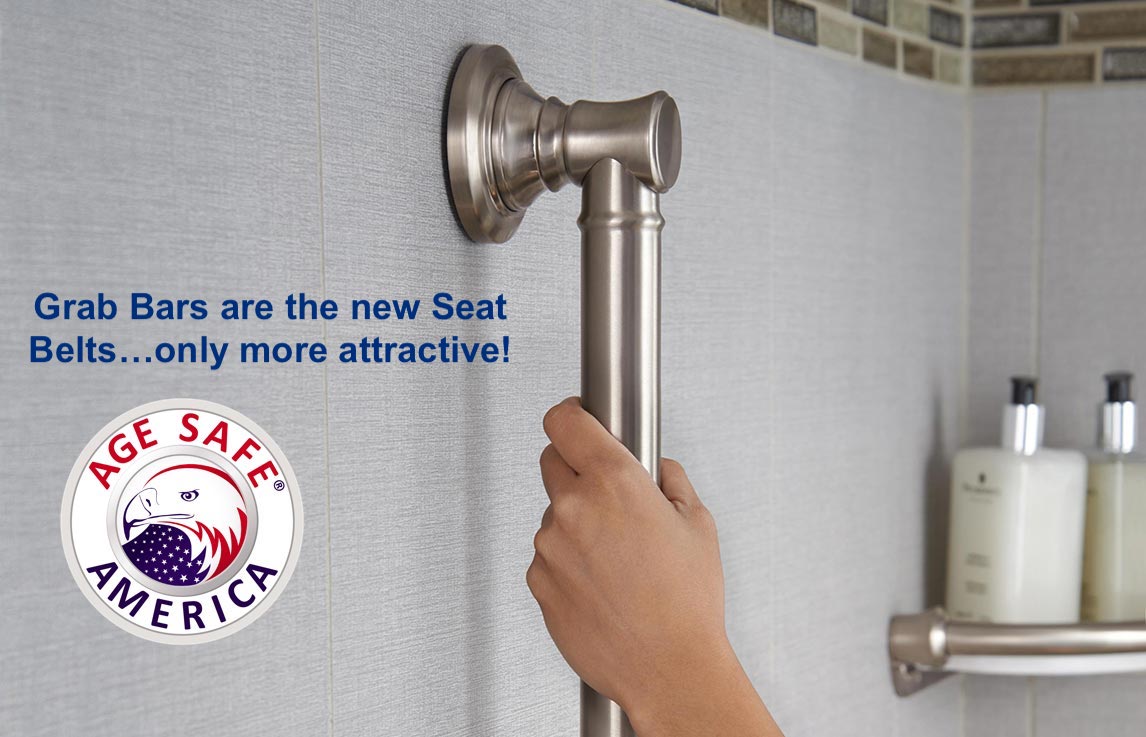Creating a safe home environment for senior citizens starts with the bathroom — the place where, for the elderly, most at-home accidents occur. Whether it’s a slip in the shower or tripping on the way to the restroom at night, falls and injuries are especially common in the bathroom. To improve bathroom safety at home, you need to know how to handle the hazards. Here are some important bathroom safety tips to help keep you or your loved ones safe.
1. INSTALL GRAB BARS Grab bars give you something to hold when you’re getting into and out of the shower. They also offer a way to catch yourself if you’re about to fall. Add grab bars and safety rails to the shower/ tub and near the toilet. Make sure they’re anchored well enough to support an adult’s weight.
2. ADD NON-SKID SURFACES While skid-proof decals are a step in the right direction, they don’t cover the entire bathtub surface, so slips are still possible. Look instead for a mat that covers the surface of the bathtub floor. Likewise, you may want to add a mat with a rubber backing to the bathroom floor.
3. PUT IN NIGHTLIGHTS For those middle-of-the-night trips back and forth to the bathroom, nightlights add illumination that can make all the difference between seeing your way safely to the restroom and tripping on something along the way.
4. LOWER THE WATER TEMPERATURE Set the whole-house water heater temperature to 120 degrees Fahrenheit or lower so that an elderly person is less likely to get burned.
5. PROVIDE SEATING Extended periods of standing to brush teeth, wash up for bed, etc., can be wearying to an elderly body. Add seating to the bathroom so a person can sit while getting ready. Likewise, consider adding a shower chair with a rigid back that allows for a seated position while showering.
6. RAISE THE TOILET SEAT To prevent overexertion from having to go to the bathroom, add a raised toilet seat that makes sitting down and getting up much easier. For anyone with knee pain, hip pain, joint pain, etc., this can be a great, practical way to improve bathroom safety.
7. HAVE ITEMS WITHIN REACH Whether it’s shampoo and conditioner easily reachable in the shower, or toothpaste and soap easy accessible at the sink, keep items in the places where you use them. This helps eliminate unnecessary reaching, searching and standing — and the potential for accidents that comes with them.
8. PROVIDE SUPERVISION In some cases, the best and most important way to protect a senior citizen in the bathroom is through the care of a loved one. Whether it’s a relative, friend or home health aide, having someone nearby greatly reduces the chance of serious injury.
Guest article by ModernBathroom

